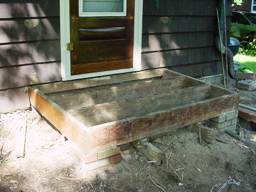In the midst of our flood angst on Saturday the phone rang. Our six year old answered and then listened and then turned to me and said in her absolute best British accent, "Daddy there is a man on the phone for you."
Imagine my total shock when in true "Monty Python" fashion I hear an English voice say, "Mike? This is Bernard with
LoMax Records in London, we've corresponded regarding Chubby Parker."
Bear with here. I have a fair amount of old sheet music that I pick up at garage sales and junk shops to learn songs for both my solo performances and for the band. Mostly I tend to get 1920's Novelty Rags and other goofy comic songs. One time at least 10 years ago I mentioned on the
Banjo-L listserv that I had sheet music by a banjo player named Chubby Parker.
That lead to an email several years ago from Bernard, an Englishman who was researching Parker. I scanned the cover and sent it to him. He called Saturday saying that their project (my guess is that is a boxed CD set of early WLS Chicago Barn Dance performers) is set for an October release. Would I consider sending a high resolution scan of the sheet music for the liner notes?
Here's where it all ties together...
I knew I had moved a big pile of sheet music up to the second floor storage room at the Tech Center. It had sat in my office for years. I told Bernard I might not be able to get to it for a while because of flooding. He was very understanding.
After I hung up I decided to look through what I had here at Foxcroft. When Bess built the house in 1928 Helen was already an accomplished musician, having taken piano lessons from age four. Helen also played clarinet and accordion.

The grand piano sat in the living room next to the front hall closet, both pictured above, and Bess designed the closet with a set of shelves for sheet music. I had kept some of Helen's music and added more of my own.

I looked through the pile, that you can see in the picture above, below the hats. I found not only the cover I knew I had, but ANOTHER Chubby Parker song. Apparently I am the only person on the planet with these things!


I emailed Bernard and he was delighted. I will scan both and send them along to him.
His reply also included this:
P.S. The Royal Festival Hall in London is hosting an exhibition to celebrate this release, running for six weeks from late September through to early November. It will contain photographs of many of these artists, some instruments, memorabilia and film, footage. I wondered if you might consider allowing us to exhibit your sheet music with a credit to your good self. It would be as safe as if it was exhibited at the Metropolitan in New York. I think people would find it a delightful thing.So of course I will send the physical copies as well.
 Here is a record of our restoration of a 1928 craftsman. We will be the second family to live in the home. Watch our progress when we prevail and our privation and pratfalls as we do not.
Here is a record of our restoration of a 1928 craftsman. We will be the second family to live in the home. Watch our progress when we prevail and our privation and pratfalls as we do not.









































